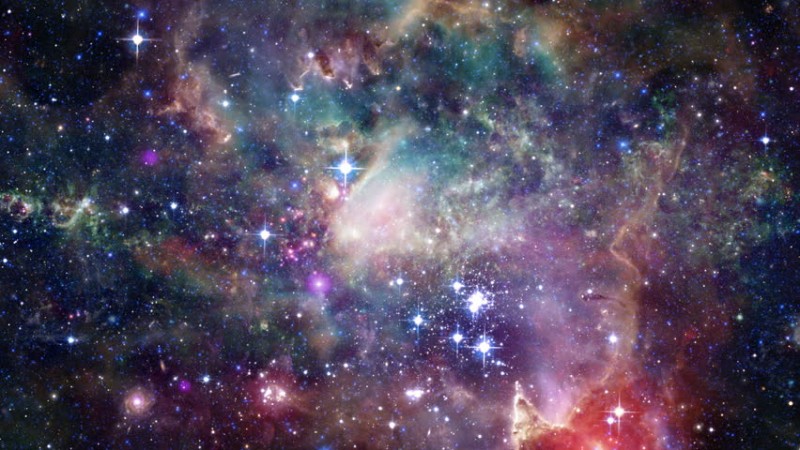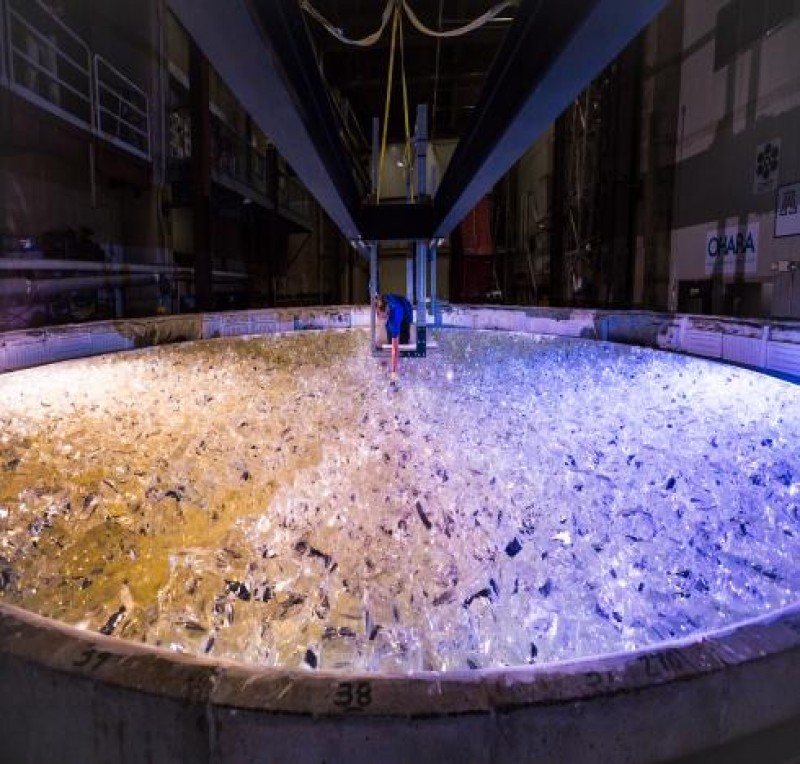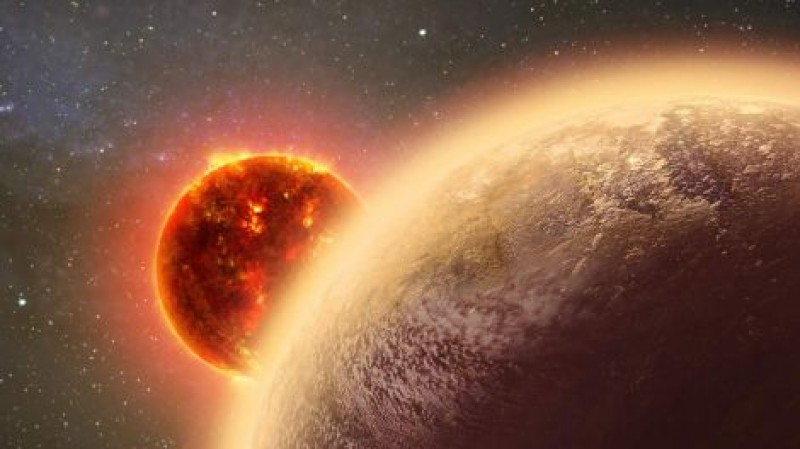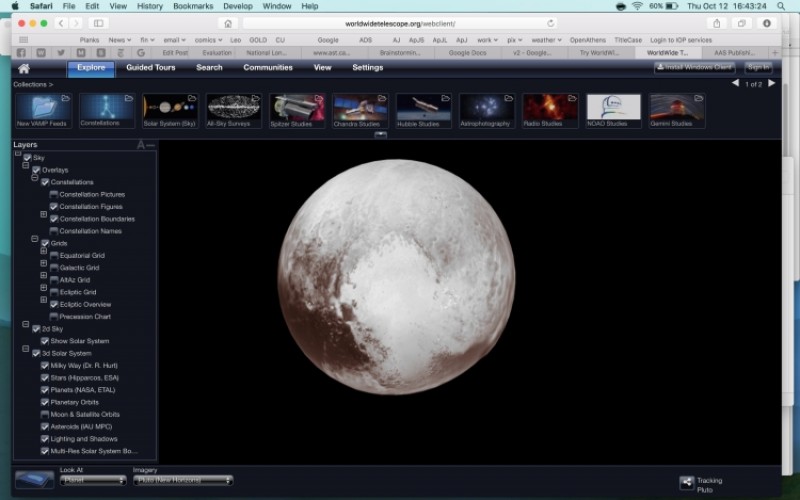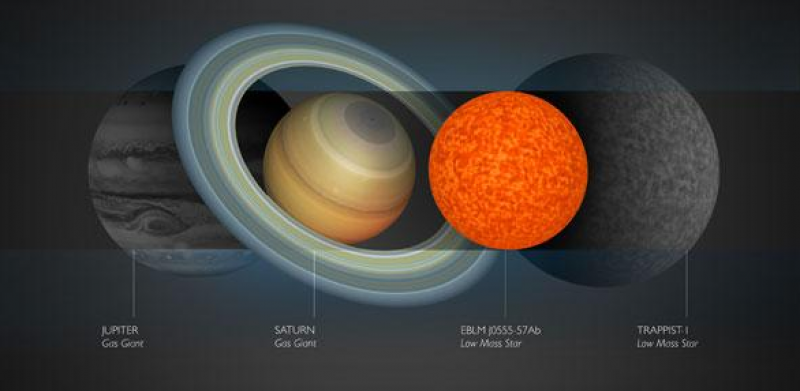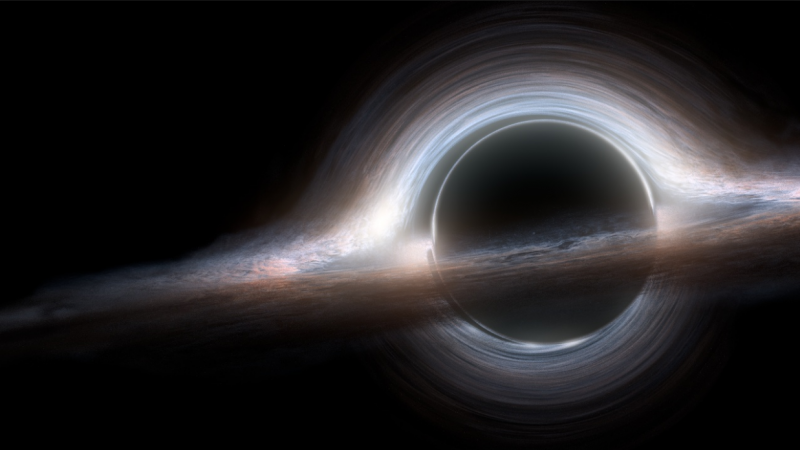Blog
Journey Through Gorgeous Nebulas in New Simulation
Wednesday, November 8th 2017 06:18 PM
NEBULAE - a cosmic meditation from Teun van der Zalm on Vimeo.
The Hubble Space Telescope gave humanity its very first up-close-views of cosmic nebulas, where dying stars explode and spread their ashes across space. From that ejected material, new stars are born.
As unforgettable as those Hubble images are, the telescope could never provide the kind of views offered by the new video, called "Nebulae." The use of a computer simulation allows for a much closer look at these colorful cosmic clouds.
In the short movie, the "camera" appears to move around and through enormous clouds, which are rich with colors, from deep purples to fiery reds. Tranquil music allows the viewer to sit back and bask in the beauty. (It's worth noting that many of the nebulas imaged by Hubble would appear quite different to a human who traveled to see them up close. These objects are frequently too faint to be seen with the naked eye, or they emit l...
Read More
Read More
Bizarre 3-Year-Long Supernova Defies Our Understanding of How Stars Die
Wednesday, November 8th 2017 06:10 PM
The appearance of a years-long supernova explosion challenges scientist's current understanding of star formation and death, and work is underway to explain the bizarre phenomenon.
Stars more than eight times the mass of the sun end their lives in fantastic explosions called supernovas. These are among the most energetic phenomena in the universe. The brightness of a single dying star can briefly rival that of an entire galaxy. Supernovas that form from supermassive stars typically rise quickly to a peak brightness and then fade over the course of around 100 days as the shock wave loses energy.
In contrast, the newly analyzed supernova iPTF14hls grew dimmer and brighter over the span of more than two years, according to a statement by Las Cumbres Observatory in Goleta, California, which tracked the object. Details of the discovery appeared on Nov. 8 in the journal Nature. [First Supernova Shock Wave Image Snapped by Planet-Hunting Telescope]
An inconspicuous discove...
Read More
Read More
Giant Magellan Telescope Project Starts Making Mirror No. 5
Monday, November 6th 2017 08:39 PM
The construction of a highly anticipated mega-telescope is proceeding apace.
Technicians have begun casting the fifth primary mirror for the Giant Magellan Telescope (GMT) at the University of Arizona's Richard F. Caris Mirror Laboratory, project representatives announced today (Nov. 3).
When the GMT is complete, it will integrate seven of these 20-ton, 27.6-foot-wide (8.4 meter) mirrors into a single light-collecting surface 80 feet (24.5 m) across. The resulting instrument will have 10 times the resolving power of NASA's iconic Hubble Space Telescope, GMT representatives have said. [Photos: Casting Mirror No. 5 for the Giant Magellan Telescope]
"Creating the largest telescope in history is a monumental endeavor, and the GMT will be among the largest privately funded scientific initiatives to date," Taft Armandroff, vice chairman of the Giant Magellan Telescope Organization (GMTO) corporation board of directors, said in a statement.
"With this next mile...
Read More
Read More
Oceans on Jupiter?
Monday, November 6th 2017 08:31 PM
Jupiter may not always have been a big ball of hydrogen and helium.
A new study suggests that, in their youth, Jupiter and other gas-giant planets may have been "steam worlds" — warm ocean planets a bit bigger than Earth, with water-vapor atmospheres.
John Chambers, a researcher at the Carnegie Institution for Science in Washington, D.C., proposes that some protoplanets may grow into steam worlds from their modest beginnings as accretions of rock and ice pebbles. [Gallery: The Strangest Alien Planets]
As the accreting bodies come together and the protoplanet grows, increasing pressure liquefies the ices, and oceans form. Without any air present, water and any other liquids sublimate, creating an atmosphere dominated by water vapor, the idea goes. Even a relatively small protoplanet of between 0.08 and 0.16 Earth masses can be quite warm — from 32 to 704 degrees Fahrenheit (0 to 347 degrees Celsius), Chambers...
Read More
Read More
Monster Planet, Tiny Star
Wednesday, November 1st 2017 05:34 PM
A giant planet has been found orbiting an ultracool dwarf star — the largest planet compared to its star ever found — leaving scientists baffled at how the duo could have formed.
The planet NGTS-1b is situated 600 light-years from our solar system, according to a statement from the University of Warwick, and it is a gas giant about the size of Jupiter. Its star, on the other hand, is just half the mass and radius of the sun. The planet orbits its star at 3 percent the distance from the Earth to the sun, and it whips around a full orbit every 2.6 Earth days.
An international collaboration of researchers found the planet using the Next-Generation Transit Survey, an array of 12 telescopes at the Paranal Observatory in northern Chile that searches for a telltale dimming in distant stars that would indicate planets passing by. [7 Ways to Discover Alien Planets]
"The discovery of NGTS-1b was a complete surprise to us — such massive planets were not...
Read More
Read More
WorldWide Telescope Application Now Universally Accessible Via Web Browser
Tuesday, October 24th 2017 08:06 PM
Have you missed out on WorldWide Telescope (WWT) because you're not using a Windows computer? Good news -- WWT can now be accessed via a web interface, with no dependence on your Operating System. WWT is a powerful application that allows users to interactively browse the multi-wavelength sky. Based on feedback from the astronomy community, WWT has now expanded its support so that anyone can use the full features of this application from their web browser.
WorldWide Telescope has been a mainstay in classrooms, museums, and planetariums since its launch as a Windows application nearly 10 years ago. It is a virtual sky, with terabytes of astronomical image overlays incorporating numerous all-sky surveys across the electromagnetic spectrum. It is also a virtual universe, with high definition base maps of Solar System planets, 3D star positions, and SDSS Cosmos galaxies. Beyond data visualization, WWT has a rich contextual narrative layer that allows its users to record their pa...
Read More
Read More
Cloudy with a Chance of Radiation: NASA Studies Simulated Radiation
Tuesday, September 26th 2017 11:55 PM
In each life a little rain must fall, but in space, one of the biggest risks to astronauts’ health is radiation “rain". NASA’s Human Research Program (HRP) is simulating space radiation on Earth following upgrades to the NASA Space Radiation Laboratory (NSRL) at the U.S. Department of Energy’s Brookhaven National Laboratory. These upgrades help researchers on Earth learn more about the effects of ionizing space radiation, to help keep astronauts safe on a journey to Mars.
Radiation is one of the most dangerous risks to humans in space, and one of the most challenging to simulate here on Earth. The risk to human health significantly increases when astronauts travel beyond Lower Earth Orbit (LEO) outside the magnetosphere. The magnetosphere shields Earth from solar particle events (SPEs) and radiation caused by the sun and galactic cosmic rays (GCRs) produced by supernova fragments. Radiation particles like ions can be dangerous...
Read More
Read More
Smallest-Ever Star Discovered by Astronomers in the UK
Saturday, September 23rd 2017 08:12 PM
The smallest star yet measured has been discovered by a team of astronomers led by the University of Cambridge in the UK. With a size just a sliver larger than that of Saturn, the gravitational pull at its stellar surface is about 300 times stronger than what humans feel on Earth.The star is likely as small as stars can possibly become, as it has just enough mass to enable the fusion of hydrogen nuclei into helium. If it were any smaller, the pressure at the center of the star would no longer be sufficient to enable this process to take place. Hydrogen fusion is also what powers the Sun, and scientists are attempting to replicate it as a powerful energy source here on Earth.These very small and dim stars are also the best possible candidates for detecting Earth-sized planets which can have liquid water on their surfaces, such as TRAPPIST-1, an ultracool dwarf star surrounded by seven temperate Earth-sized worlds.The newly-measured star, called EBLM J0555-57Ab, is located about six hund...
Read More
Read More
2 Monster Black Holes Spotted at Galaxy's Heart
Thursday, September 21st 2017 09:48 PM
Not one but two gigantic black holes lurk at the heart of the distant spiral galaxy NGC 7674, a new study suggests.
These two supermassive black holes are separated by less than 1 light-year and together harbor about 40 million times the mass of the sun, researchers said.
If it holds up, the find would be just the second known system of double supermassive black holes. The other, announced in 2006, is in a galaxy known as 0402+379, whose two giant black holes are separated by about 24 light-years and boast a combined 15 billion solar masses. [No Escape: Dive into a Black Hole (Infographic)]
(The Laser Interferometer Gravitational-Wave Observatory project, or LIGO, has spotted the gravitational waves emitted by multiple binary black holes as they spiral toward each other. But the LIGO detections involve objects a few tens of times more massive than the sun, known as stellar-mass black holes.)
The research team analyzed observations of NGC 7674, which lies ab...
Read More
Read More
SUPERMASSIVE BLACK HOLES OR THEIR GALAXIES? WHICH CAME FIRST?
Tuesday, September 19th 2017 07:30 PM
There’s a supermassive black hole at the center of almost every galaxy in the Universe. How did they get there? What’s the relationship between these monster black holes and the galaxies that surround them?
Every time astronomers look farther out in the Universe, they discover new mysteries. These mysteries require all new tools and techniques to understand. These mysteries lead to more mysteries. What I’m saying is that it’s mystery turtles all the way down.
One of the most fascinating is the discovery of quasars, understanding what they are, and the unveiling of an even deeper mystery, where do they come from?
As always, I’m getting ahead of myself, so first, let’s go back and talk about the discovery of quasars.
Molecular clouds scattered by an intermediate black hole show very wide velocity dispersion in this artist’s impression. This scenario well explains the observational features of a peculiar molecular cloud CO-0.40-0.22. Credit:...
Read More
Read More
